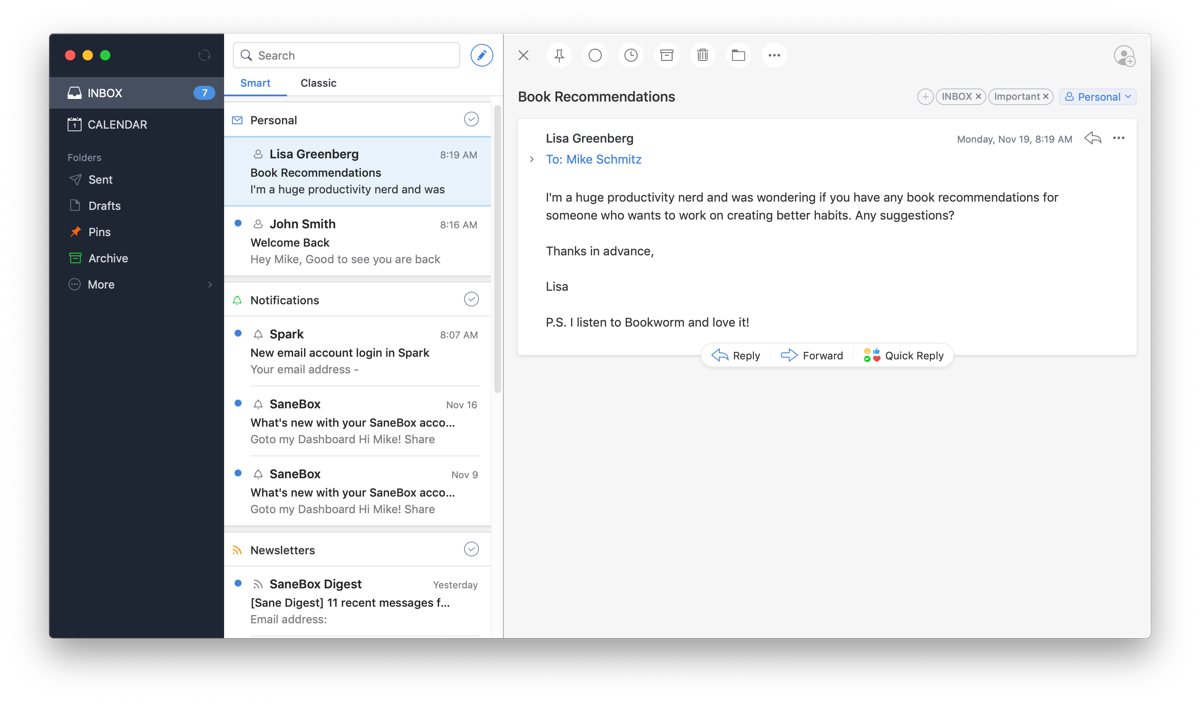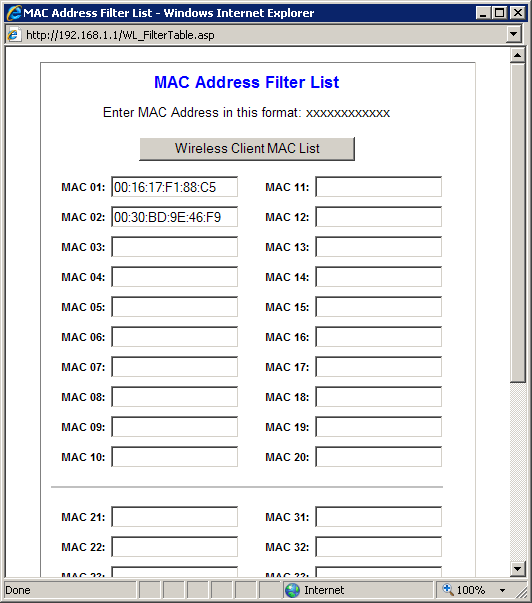Microsoft Mail App Mac
The Apple ecosystem of proprietary hardware, operating systems, software and services is fantastic, as long as you remain an Apple loyalist. But the maker of Macs and iPhones doesn’t make it easy for you to jump ship if you decide you’d rather go with Windows 10 or Linux instead. Much of your personal data and settings will remain locked up in Apple’s proprietary formats. At first glance, this may seem to be the case with Apple Mail. But liberating your emails and inboxes from Apple Mail and moving to a different client for Windows 10, such as Microsoft Outlook or Mozilla Thunderbird, is surprisingly easy.
- Microsoft Mail App Contacts
- Gmail App For Mac Desktop
- Microsoft Mail App Machine
- Microsoft Mail App For Mac
- Microsoft Mail For Mac
If Apple Mail (or the Gmail web interface) isn't meeting all your needs, check out this guide where we look at what is the best email app for the Mac. 2019-3-4 Best Mac email client for Microsoft email users looking for an Outlook alternative. Built exclusively for the Microsoft mail ecosystem, Hiri is a smart mail app designed for Exchange, Office 365, Outlook.com, Live.com, Hotmail.com, and MSN.com. Like Mailplane does for Gmail above, Hiri won't work with non-Microsoft mail services. Outlook for Mac. Learn how to integrate your app with Outlook. Microsoft Outlook with an Office 365 subscription is the latest version of Outlook.

Here are two ways to do it:
Method 1: Sync Apple Mail via IMAP
Why It Compares: More Comprehensive Alternative To Apple’s Mail App. Customization is better in eM client than Microsoft Outlook, nevertheless, it is very similar to Outlook. Contacts and calendar integrate well. If you log on to Windows 10 using a Microsoft account with an Outlook.com, Live, Hotmail, or MSN address, that account is added to the Mail and Calendar apps. You can add that and many other email accounts to the Mail and Calendar apps to start sending and receiving email and creating and managing events.
The first method is the easiest, and for most cases, it’ll work.
Apples built in mail client uses the IMAP storage format, which keeps a copy of your messages on both the server and your Mac. If you are already using an iCloud email address, you can sign into a supported email client on Windows 10 such as Windows Mail, Microsoft Outlook 2016 or Mozilla Thunderbird and your emails will show up.
If you have an @icloud.com email address, simply set up your new email client in Windows 10 using your icloud.com credentials. For example, in Windows Mail, choose iCloud. Enter your iCloud address and your Apple ID password. In Windows Mail, the application will automatically detect the server settings.
If you are using an email client that doesn’t automatically detect iCloud’s server settings, use the following IMAP settings:
- Server name: imap.mail.me.com
- SSL Required: Yes (try TLS if SSL doesn’t work)
- Port: 993
- Username: Enter your iCloud user name or your entire email address
- Password: Enter your iCloud password or generate an app specific password if you’ve enabled 2-factor authentication for your Apple ID
For the outgoing SMTP server, use these:
- Server name: smtp.mail.me.com
- SSL Required: Yes
- Port: 587
- SMTP Authentication Required: Yes
If you are using Gmail or another web-based email service that supports IMAP, you can do the same thing: enter your IMAP credentials and your messages will sync automatically. (If you use something other than iCloud for your email, the server settings will vary, but you can usually find them in the email provider’s support pages. If you are having trouble finding one, leave us a comment and we can help.)
Method 2: Export your Mailboxes to a File
If, for some reason, you aren’t using an IMAP server with Apple Mail, you can still export your mailboxes to another email client.
There are numerous email clients on the Mac, and the one you use might vary when it comes to migration. For the purposes of this article, I am going to discuss the two most popular clients: Mail and Microsoft Outlook. Not many users are fans of Microsoft’s new Windows Mail client in Windows 10. If you want, you can choose from other brands such as Mozilla Thunderbird; or use web mail services such as Gmail or Outlook.com.
If you do need to export emails stored on your Mac, Apple Mail only supports the .mbox format. There is a free third party utility called SoftTweak MBOX to PST Tool, which you can use to import your emails into Outlook 2016. In Apple Mail, select the mailbox you want to export, right click it then click Export…
Save the .mbox file onto an external drive or a cloud storage account that you can access from your Windows 10 PC. After that, move on to the next step of importing your .mbox file.
Import .MBOX Mail Files into Mozilla Thunderbird
Mozilla Thunderbird is a free email client for Windows. It works more like Mail, while Windows 10’s built in Windows Mail app is more cloud based. With Windows Mail, there are no options to migrate messages except if you already have an account setup using IMAP. First, download then install Mozilla Thunderbird then download the free ImportExportTools add-on from Mozilla.
Launch Thunderbird, press the Alt
key on your keyboard, click Tools > Add-ons
Microsoft Mail App Contacts
Select the hamburger menu, click Install Add-on, browse to where the ImportExportTools add on is saved then click Open.
Click Install Now
Click Restart now to confirm changes.
Press the Alt key on your keyboard, click Tools > ImportExportTools > Import mbox file.
Select Import directly one or more mbox files then click OK
Open the .mbox folder file
Select the .mbox file then click OK. That’s it, your messages should be imported into Thunderbird.
Conclusion
Gmail App For Mac Desktop
Those are the two main ways you can export/import email from Apple Mail to a Windows-based email client. Thanks to the prevalence of IMAP, most of you will be able to get by with the easier Method 1. If that’s not working out for you, let us know what issues you’re running into and we can help out.
Moving from macOS to Windows 10? Tell us why in the comments.

Mail User Guide
Use the Mail app to send, receive and manage email for all of your email accounts in one location. Simply add the accounts — such as iCloud, Exchange, Google, school, work or other — you want to use in Mail.
Add an email account
The first time you open the Mail app on your Mac, it may prompt you to add an account. Select an account type — if you don’t see your type, select Other Mail Account — then enter your account information.
If you already added an email account, you can still add more. In Mail, choose Mail > Add Account, select an account type, then enter your account information. Make sure the Mail tickbox is selected for the account.
If you’re using an account on your Mac with other apps, such as Contacts or Messages, you can also use that account with Mail. In Mail, choose Mail > Accounts to open Internet Accounts preferences, select the account on the left, then select the Mail tickbox on the right.
Microsoft Mail App Machine
Temporarily stop using an email account
In the Mail app on your Mac, choose Mail > Accounts.
Select the account, then deselect the Mail tickbox.
Now the account’s messages are not shown in Mail.
To use the account again with Mail, select the Mail tickbox; the account’s messages are shown again (they don’t need to be downloaded from the server again).
Remove an email account
When you remove an email account from Mail, the account’s messages are deleted and no longer available on your Mac. Copies of messages remain on the account’s mail server and are still available (from webmail, for example).
Important: If you’re unsure whether messages you want to keep are still on the mail server, move or copy them to a mailbox stored on your Mac (the mailbox appears in the On My Mac section in the Mail sidebar) before you delete the account in Mail.
Microsoft Mail App For Mac
In the Mail app on your Mac, choose Mail > Preferences, then click Accounts.
Select an account, then click the Remove button .
Note: If the account is used by other apps on your Mac, you’re asked to remove the account in Internet Accounts System Preferences. Click the button to open Internet Accounts, then deselect the Mail tickbox for the account. To stop using the account in all apps, make sure the account is selected, then click the Remove button .
